Abstract
Reciprocal competition binding assays have previously demonstrated that 20 of 24 human rhinovirus serotypes tested compete for a single cellular receptor. These studies suggested that the vast majority of rhinovirus serotypes utilize a single cellular receptor. With HeLa cells as an immunogen, a mouse monoclonal antibody was isolated which had the precise specificity predicted by the competition binding study. The receptor antibody was shown to protect HeLa cells from infection by 78 of 88 human rhinovirus serotypes assayed. In addition, the receptor antibody protects HeLa cells from infection by three coxsackievirus A serotypes. The receptor antibody was unable to protect cells from infection by a wide range of other RNA and DNA viruses. Using the receptor antibody and human rhinovirus type 15, we determined that the cellular receptor utilized by the vast number of human rhinovirus serotypes is present only on cells of human origin, with the exception of chimpanzee-derived cells. The receptor antibody has a strong affinity for the cellular receptor as evidenced by its rapid binding kinetics and ability to displace previously bound human rhinovirus virions from receptors. No viral variants were identified which could bypass the receptor blockage.
Full text
PDF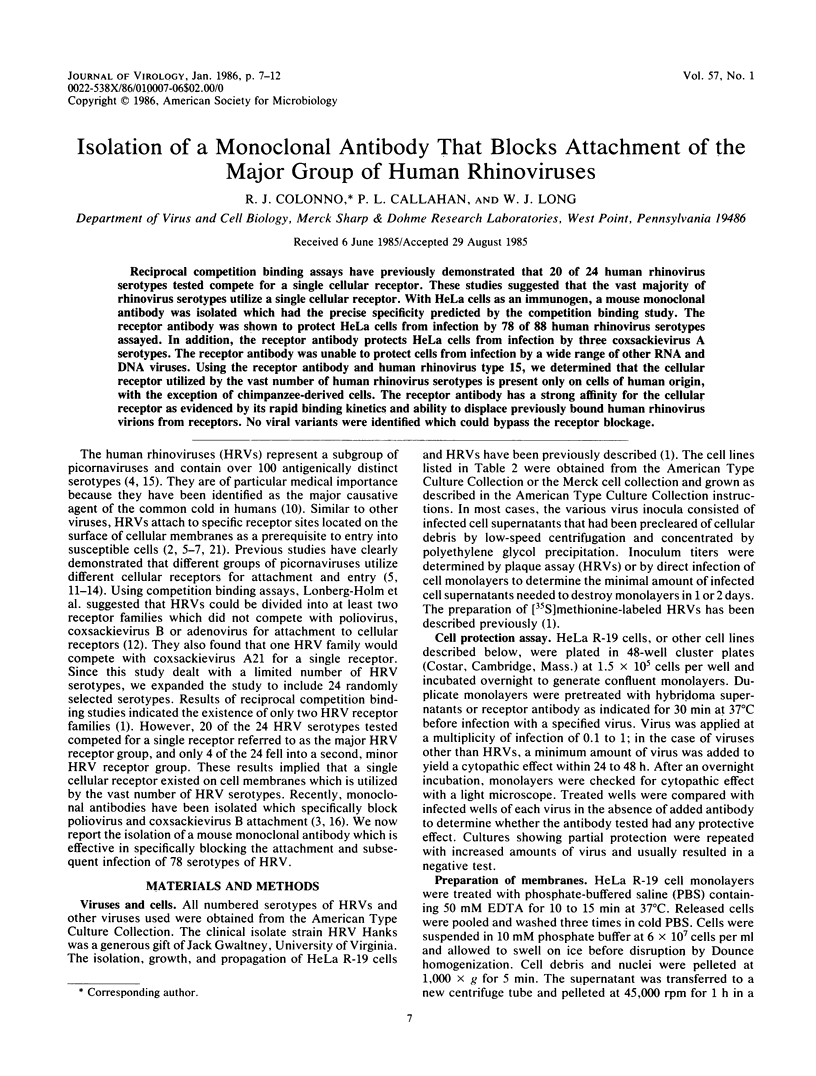
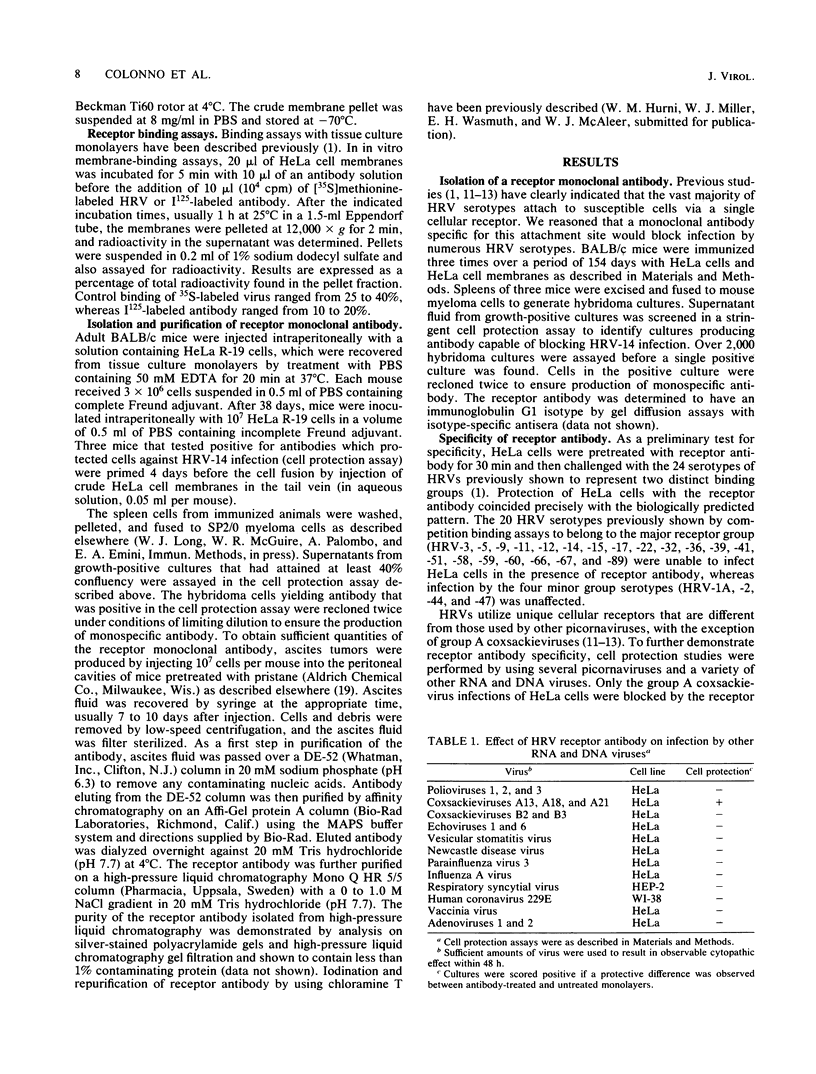

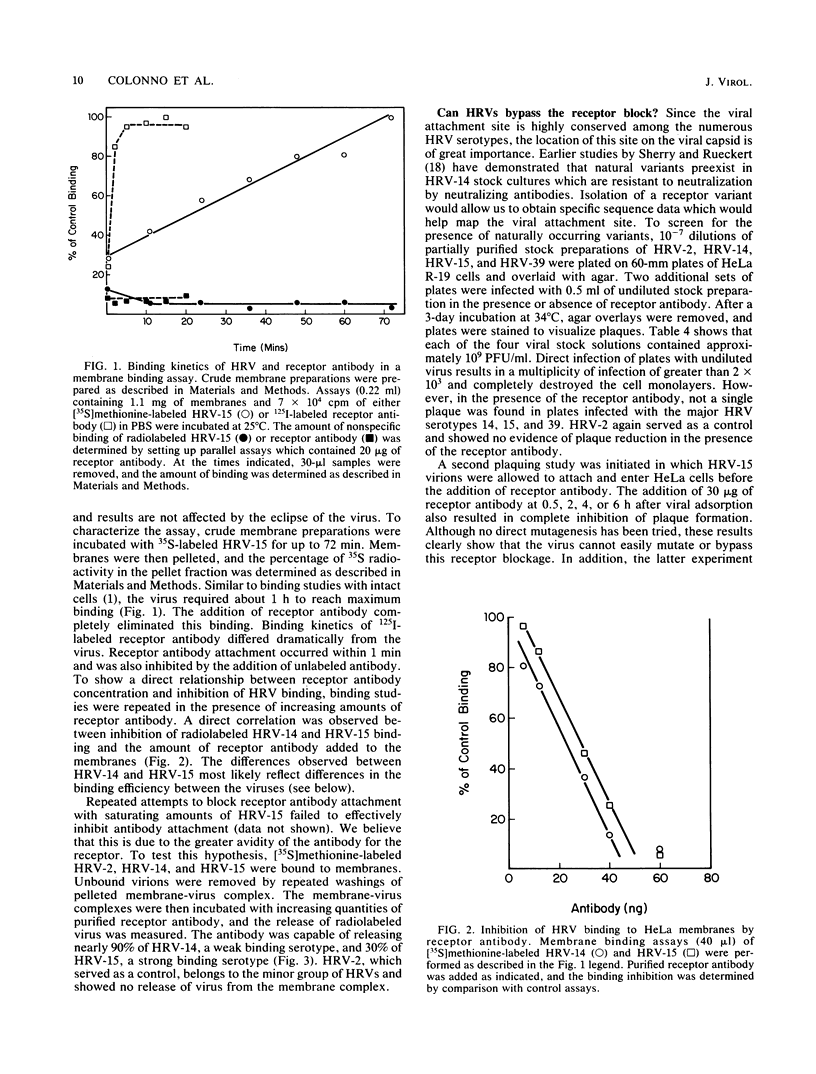
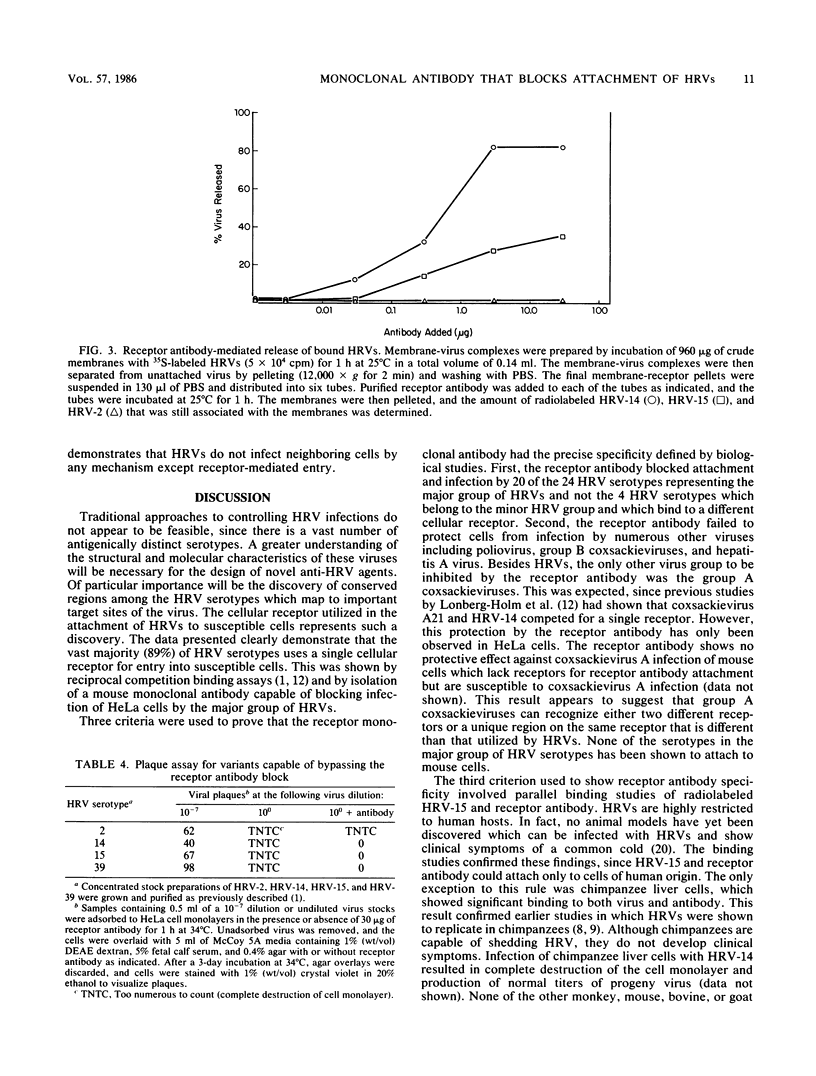
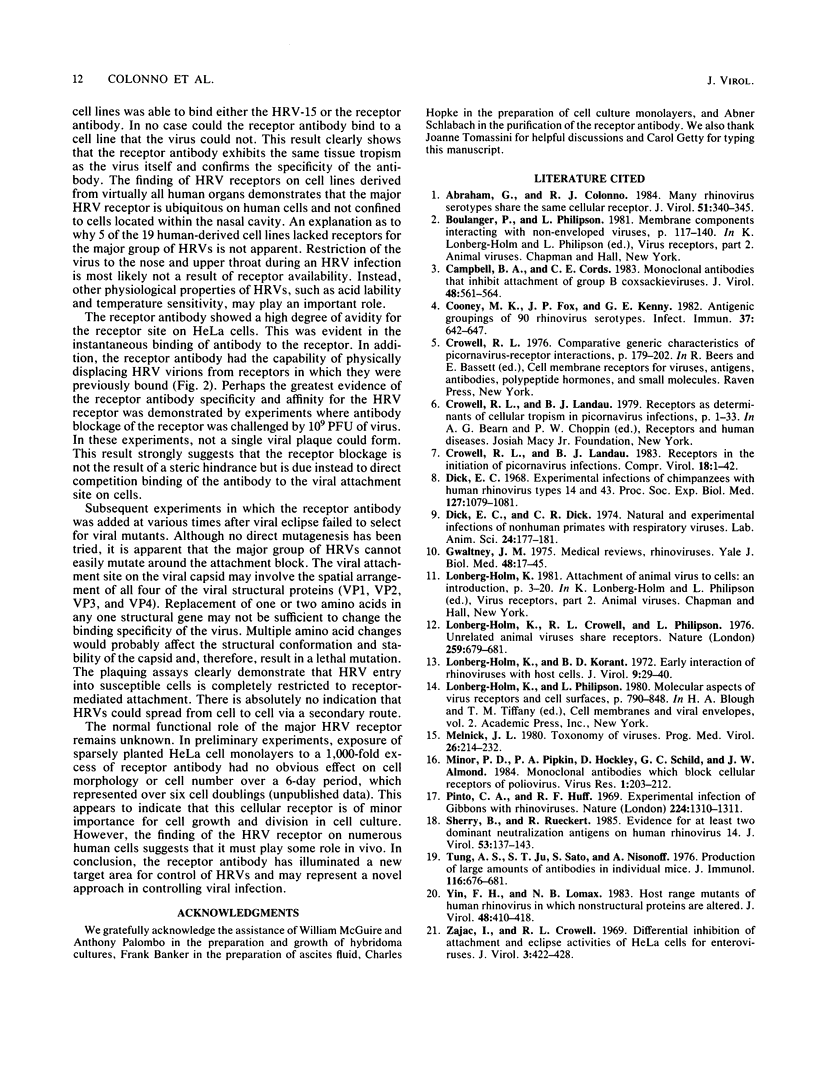
Selected References
These references are in PubMed. This may not be the complete list of references from this article.
- Abraham G., Colonno R. J. Many rhinovirus serotypes share the same cellular receptor. J Virol. 1984 Aug;51(2):340–345. doi: 10.1128/jvi.51.2.340-345.1984. [DOI] [PMC free article] [PubMed] [Google Scholar]
- Campbell B. A., Cords C. E. Monoclonal antibodies that inhibit attachment of group B coxsackieviruses. J Virol. 1983 Nov;48(2):561–564. doi: 10.1128/jvi.48.2.561-564.1983. [DOI] [PMC free article] [PubMed] [Google Scholar]
- Cooney M. K., Fox J. P., Kenny G. E. Antigenic groupings of 90 rhinovirus serotypes. Infect Immun. 1982 Aug;37(2):642–647. doi: 10.1128/iai.37.2.642-647.1982. [DOI] [PMC free article] [PubMed] [Google Scholar]
- Dick E. C., Dick C. R. Natural and experimental infections of nonhuman primates with respiratory viruses. Lab Anim Sci. 1974 Feb;24(1):177–181. [PubMed] [Google Scholar]
- Dick E. C. Experimental infections of chimpanzees with human rhinovirus types 14 and 43. Proc Soc Exp Biol Med. 1968 Apr;127(4):1079–1081. doi: 10.3181/00379727-127-32875. [DOI] [PubMed] [Google Scholar]
- Gwaltney J. M., Jr Rhinoviruses. Yale J Biol Med. 1975 Mar;48(1):17–45. [PMC free article] [PubMed] [Google Scholar]
- Lonberg-Holm K., Crowell R. L., Philipson L. Unrelated animal viruses share receptors. Nature. 1976 Feb 26;259(5545):679–681. doi: 10.1038/259679a0. [DOI] [PubMed] [Google Scholar]
- Lonberg-Holm K., Korant B. D. Early interaction of rhinoviruses with host cells. J Virol. 1972 Jan;9(1):29–40. doi: 10.1128/jvi.9.1.29-40.1972. [DOI] [PMC free article] [PubMed] [Google Scholar]
- Melnick J. L. Taxonomy of viruses, 1980. Prog Med Virol. 1980;26:214–232. [PubMed] [Google Scholar]
- Minor P. D., Pipkin P. A., Hockley D., Schild G. C., Almond J. W. Monoclonal antibodies which block cellular receptors of poliovirus. Virus Res. 1984;1(3):203–212. doi: 10.1016/0168-1702(84)90039-x. [DOI] [PubMed] [Google Scholar]
- Pinto C. A., Haff R. F. Experimental infection of gibbons with rhinovirus. Nature. 1969 Dec 27;224(5226):1310–1311. doi: 10.1038/2241310a0. [DOI] [PubMed] [Google Scholar]
- Sherry B., Rueckert R. Evidence for at least two dominant neutralization antigens on human rhinovirus 14. J Virol. 1985 Jan;53(1):137–143. doi: 10.1128/jvi.53.1.137-143.1985. [DOI] [PMC free article] [PubMed] [Google Scholar]
- Tung A. S., Ju S. T., Sato S., Nisonoff A. Production of large amounts of antibodies in individual mice. J Immunol. 1976 Mar;116(3):676–681. [PubMed] [Google Scholar]
- Yin F. H., Lomax N. B. Host range mutants of human rhinovirus in which nonstructural proteins are altered. J Virol. 1983 Nov;48(2):410–418. doi: 10.1128/jvi.48.2.410-418.1983. [DOI] [PMC free article] [PubMed] [Google Scholar]
- Zajac I., Crowell R. L. Differential inhibition of attachment and eclipse activities of HeLa cells for enteroviruses. J Virol. 1969 Apr;3(4):422–428. doi: 10.1128/jvi.3.4.422-428.1969. [DOI] [PMC free article] [PubMed] [Google Scholar]


